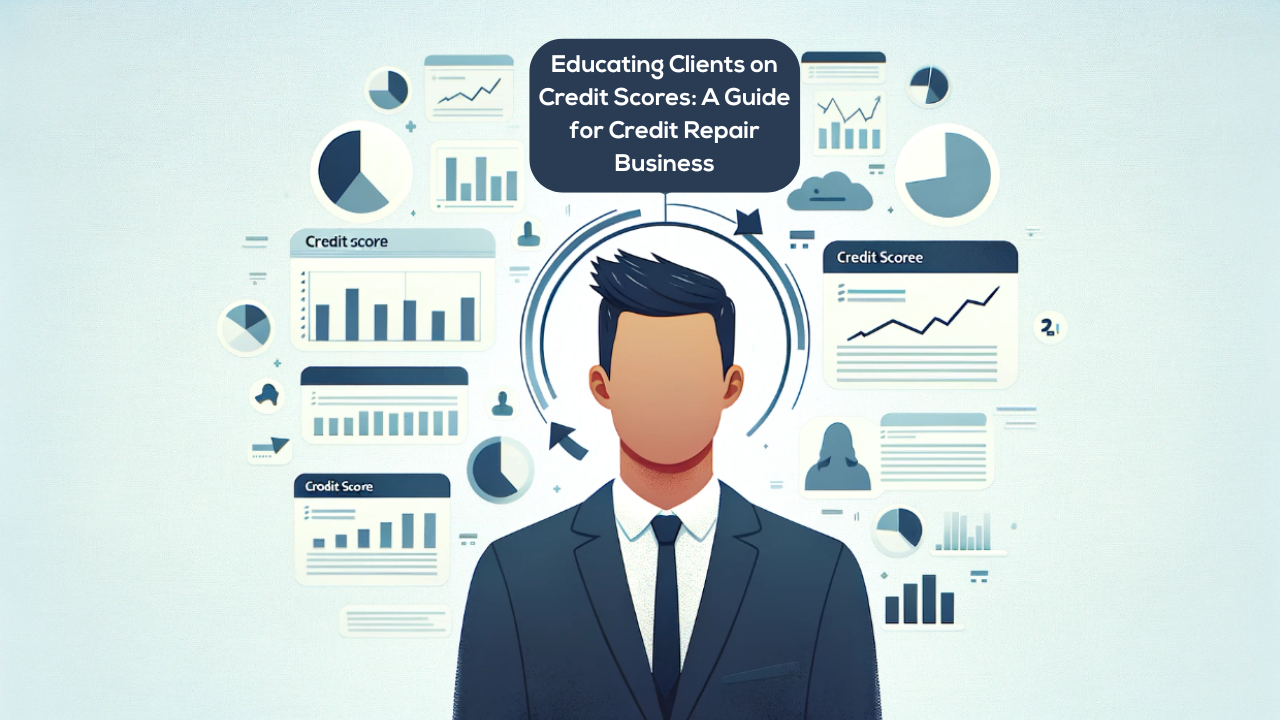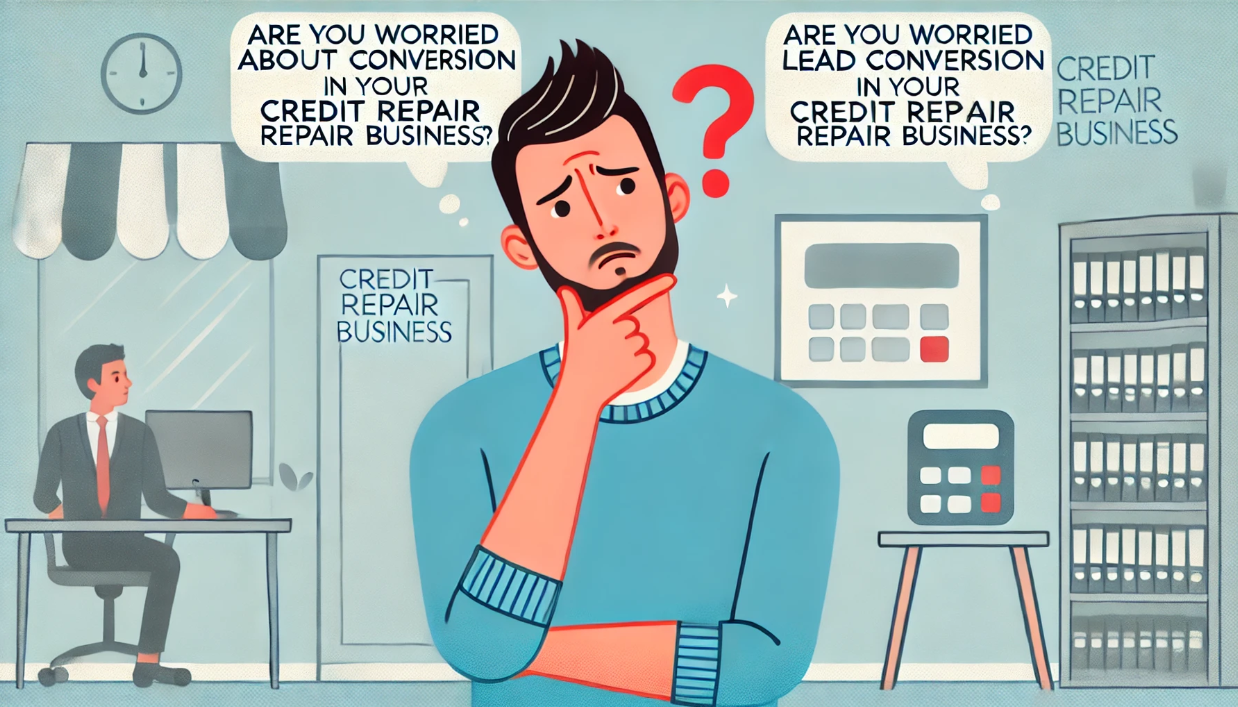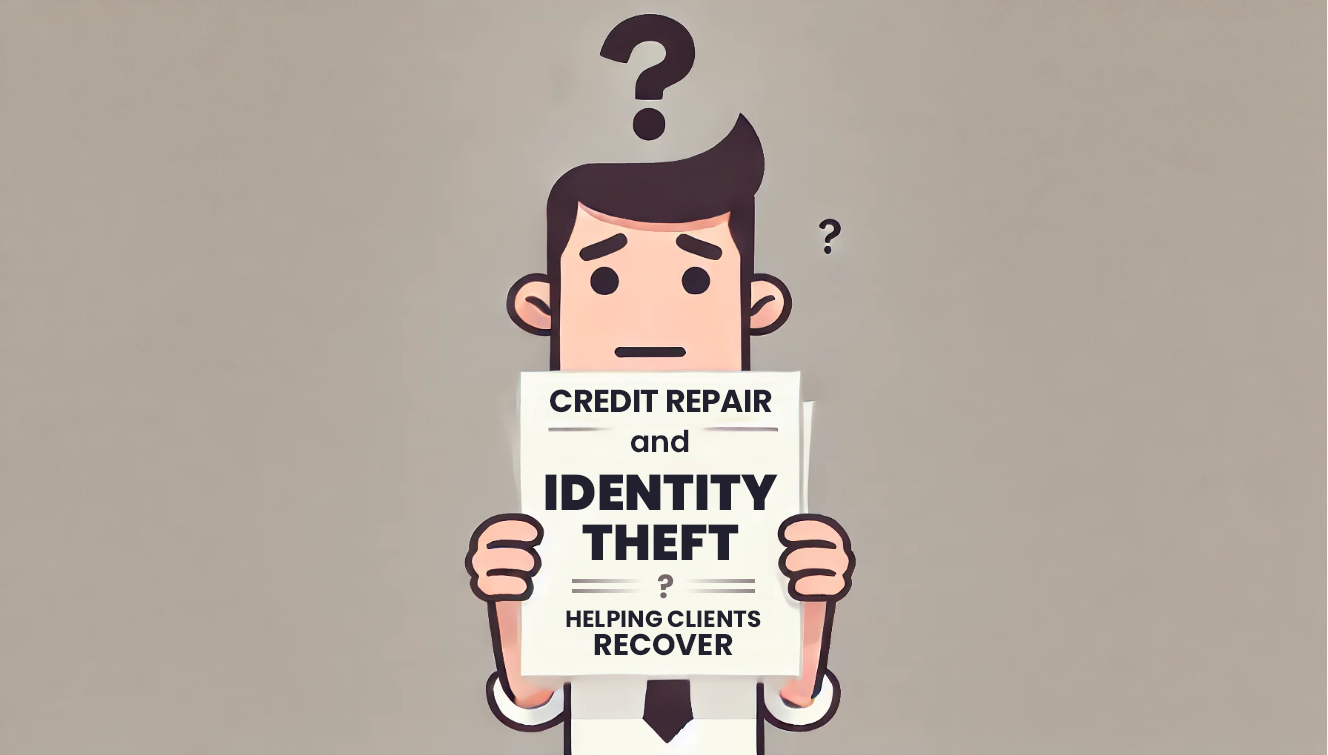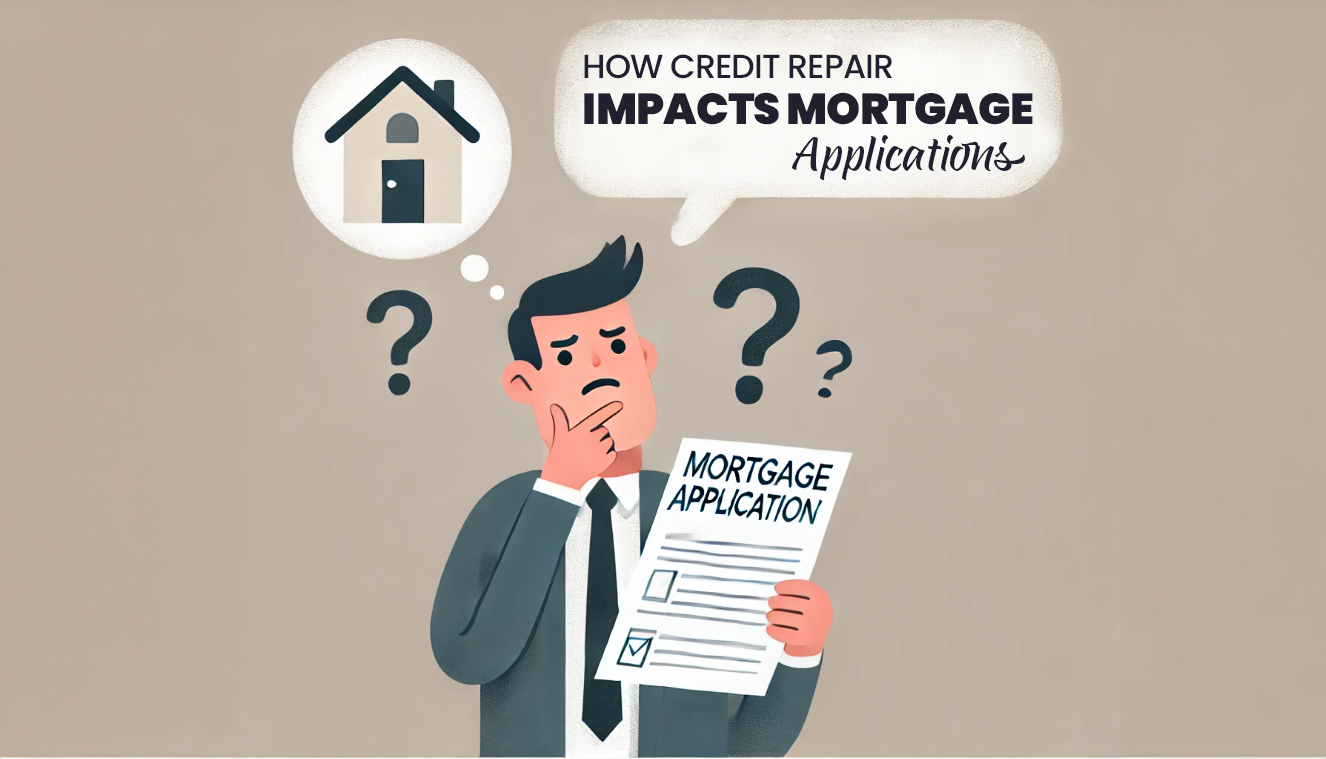Educating Clients on Credit Scores [For Credit Repair Businesses]
Understanding credit scores is essential not only for individuals seeking to maintain or improve their financial standing but also for the credit repair businesses that support them. These scores are central to financial health, serving as a key indicator of creditworthiness for lenders and financial institutions. A good score eases securing mortgages, car loans, and negotiating lower interest rates, offering substantial benefits. Conversely, a poor credit score leads to high interest rates and limited financial product access, creating a tough cycle of financial disadvantage.
For credit repair businesses, being well-versed in all aspects of scores—from how they are calculated to how they can be improved—is vital. Credit repair businesses not only work on correcting inaccuracies in credit reports but also play a crucial educational role. By informing clients about the nature and implications of credit scores, they empower them to make informed financial decisions and adopt healthier credit habits. In this blog, we will discuss everything you need to know about educating clients on credit scores. Read on to learn more!
Comprehensive Guide to Credit Scores
Credit scores are numerical expressions based on an analysis of a person’s credit files, representing the creditworthiness of an individual. Derived from credit reports, these scores influence a broad spectrum of financial decisions, from loan approvals to the terms of credit offered by lenders. For credit repair businesses, a deep understanding of credit scores is fundamental, as it enables them to assist clients more effectively.
Definition and Importance of Credit Scores
Credit scores are calculated using the data in your credit reports and range typically from 300 to 850 (FICO and Vantage Scoring Model). A higher score signifies a lower risk to lenders and creditors. The importance of these scores extends beyond just securing loans or credit cards; they can affect rental applications, insurance premiums, and even employment opportunities. For businesses and individuals alike, a good credit score can mean access to better financial opportunities and lower interest rates, translating into significant long-term savings.
Components of Credit Scores
Understanding what factors contribute to a credit score is crucial for any credit repair strategy. These components include:
-
Payment History (35%)
This is the most significant factor affecting scores. It reflects whether you have paid past credit accounts on time. Late payments, bankruptcies, and foreclosures have a negative impact, whereas making payments on time consistently improves your score.
-
Credit Utilization (30%)
This measures how much of your available credit you are using of your open revolving credit lines. Lower credit utilization rates are seen as indicators of good financial management skills. It is often recommended to keep the credit utilization below 30% of your credit limits or lower.
-
Length of Credit History (15%)
This considers the age of your oldest credit account, your newest credit account, and the average age of all your accounts. Lenders would like to see a long history of responsible credit usage.
-
Types of Credit (10%)
This reflects the mix of credit products you have, including credit cards (revolving accounts), installment loans, auto loans, and mortgage loans. A diverse mix of credit types can positively influence your score.
-
New Credit Inquiries (10%)
Every time you apply for a new line of credit, a hard inquiry is made, which can lower your score temporarily. Frequent inquiries can indicate higher risk to lenders.
Understanding Credit Reports
Credit reports compile an individual’s credit history, detailing past and current credit relationships. These reports include personal information, detailed account histories, public records, and inquiries into your credit history. Key elements include:
- Personal Information: Your name, address, Social Security Number, and potentially employment information.
- Credit Accounts: Includes all lines of credit (loans, credit cards) and your history with them—such as account balances, payment history, and when each account was opened.
- Credit Inquiries: Lists all entities that have requested your credit report, divided into ‘hard’ inquiries (which affect your score and are triggered by an application for new credit) and ‘soft’ inquiries (which do not affect your score).
- Public Records and Collections: Includes bankruptcies, foreclosures, suits, wage attachments, liens, and judgments.
The Role of the 3 Credit Bureaus
In the United States, there are three major credit bureaus: Equifax, Experian, and Transunion. Each bureau maintains its own credit reports and scores on individuals. Although their methods are similar, the information they collect might differ slightly, which can lead to variations in scores across bureaus. Understanding these differences is vital for credit repair services as they navigate disputes and corrections across different reports.
Credit repair businesses must be adept at interpreting these reports and scores to effectively counsel their clients on improving their financial standing. With this comprehensive understanding of credit scores and reports, businesses are better equipped to provide valuable services that can genuinely transform a client’s financial trajectory.
How Credit Scores Are Calculated
Understanding how these scores are calculated is crucial for both consumers and credit repair businesses. This knowledge not only aids in interpreting scores but also in strategizing for credit improvement. Credit scores are determined through complex algorithms that assess various aspects of an individual’s credit history.
The Algorithms Behind Credit Scoring
Two of the most widely recognized credit scoring models in the United States are FICO (Fair Isaac Corporation) and VantageScore. Both models analyze similar types of data from credit reports, but they weigh the information slightly differently, which can lead to variations in the scores they generate.
-
FICO Score
The FICO score, created by the Fair Isaac Corporation, is used in over 90% of lending decisions in the U.S. FICO scores range from 300 to 850, with the algorithm considering five main categories of credit data: payment history, amounts owed, length of credit history, new credit, and credit mix. The exact formula is proprietary, which means the specific calculations are not publicly disclosed, but the impact of each category is well understood.
-
Vantage Score
Developed as a joint venture by the three major credit bureaus (Equifax, Experian, and TransUnion), VantageScore was designed to be a more consistent and inexpensive alternative to FICO. While it evaluates the same general information as the FICO score, Vantage Score has introduced changes over the years in its scoring model to place more emphasis on trends over time rather than snapshots of a person’s credit usage. Like FICO, its scores also range from 300 to 850.
Educating Clients on Credit Scores
For credit repair businesses, a fundamental component of client service is education about these scores. This involves not only explaining what a credit score is but also providing actionable strategies for improvement and developing educational materials that empower clients to maintain and enhance their credit standing long-term.
Strategies for Score Improvement
Improving a client’s credit score involves a combination of tactics tailored to their specific financial situation. Here are some effective strategies that credit repair businesses can advise their clients to adopt:
- Pay Bills on Time: Since payment history is a significant factor affecting scores, ensuring that clients understand the importance of timely payments is crucial. Setting up reminders and automatic payments can help avoid missed payments.
- Optimize Credit Utilization: Clients should be advised to keep their credit utilization low—generally, under 30% of their total credit limit is recommended. For those over this ratio, creating a plan to pay down balances can be beneficial.
- Limit New Credit Inquiries: While seeking new credit is sometimes necessary, it’s important to do so judiciously. Credit repair advisors should educate clients about the impact of hard inquiries on their scores and recommend spacing out applications for new credit.
- Diversify Credit Types: Having a mix of credit types can positively impact a credit score. If appropriate, clients might be advised to consider different types of credit, such as an installment loan or a revolving credit account, if it makes sense for their financial situation.
- Address Inaccuracies on Credit Reports: One of the most direct ways to improve a credit score is to ensure the credit report is accurate. Encouraging clients to regularly review their credit reports and guiding them through the dispute process for any inaccuracies can lead to improvements in their scores.
- Educate on the Impact of Closing Accounts: Clients might not be aware that closing credit accounts can affect their credit score by impacting their credit utilization ratio and the average age of their credit accounts. Advising them on the timing and impact of closing accounts can prevent unintended negative effects on their scores.
Developing Effective Educational Materials
Creating educational materials that effectively communicate key credit information requires understanding the audience’s needs and presenting information in an engaging and accessible manner. Here are some strategies to create impactful educational content:
-
Use Simple, Jargon-Free Language
The topic of credit scores can be complex, so it’s important to use simple language and avoid industry jargon. This makes the material accessible to a broader audience, regardless of their financial literacy level.
-
Incorporate Visual Aids
Visuals such as charts, graphs, and infographics can help illustrate complex information like how credit scores are calculated or the impact of different actions on a credit score. Visual aids make the learning process more engaging and easier to understand.
-
Provide Real-Life Examples
Using case studies or examples can help clients relate the information to their own lives. Showing scenarios of how certain actions improved a hypothetical client’s credit score can motivate real clients to follow similar strategies.
-
Offer Downloadable Resources
Checklists, templates, or guides that clients can download and use can provide ongoing value. For example, a budget planner or a checklist for credit report review can be excellent tools for clients.
-
Regularly Update Materials
Credit laws and scoring algorithms can change. Keeping educational materials updated not only ensures compliance but also maintains the trust of clients by providing them with current and accurate information.
-
Interactive Workshops and Webinars
Hosting live sessions where clients can ask questions and engage directly with credit experts can enhance understanding and retention of the information.
The Impact of Credit Scores on Financial Opportunities
Credit scores play a critical role in shaping financial opportunities for individuals. They not only determine the accessibility of various financial products but also significantly affect the terms offered by lenders. For credit repair businesses, understanding and communicating the wide-ranging impact of credit scores can enhance the value they provide to their clients by helping them recognize the long-term benefits of maintaining a good credit score.
Credit Scores and Loan Approvals
The influence of credit scores on loan approvals, terms, and interest rates cannot be overstated. Here’s how credit scores typically affect the borrowing experience:
-
Approval Processes
Credit scores are the first checkpoint in the loan approval process. Lenders use these scores to assess the risk level of a borrower. A higher credit score suggests that the borrower has a history of managing debt responsibly, which increases their likelihood of being approved. Conversely, a lower score might lead to a loan application being denied or subjected to further scrutiny.
-
Interest Rates
One of the most direct impacts of a credit score is on the interest rate offered on a loan. Borrowers with higher credit scores generally qualify for lower interest rates, as they are perceived as lower risk. For instance, a difference of just 50 points in a credit score can mean a significant variation in interest rates, potentially adding up to thousands of dollars in additional interest payments over the life of a loan.
-
Loan Terms
Besides influencing whether a loan is approved and what interest rate is set, these scores can also affect other loan terms, such as the amount of the loan, the loan duration, and requirements for private mortgage insurance. Better credit scores often enable borrowers to negotiate more favorable terms.
Long-Term Benefits of a Good Score
Maintaining a high score offers numerous advantages that extend beyond immediate financial products. These long-term benefits include:
-
Greater Negotiating Power
A high credit score gives borrowers the leverage to negotiate better terms on loans and credit lines. This could mean negotiating a lower interest rate or better repayment terms, both of which can lead to significant savings over time.
-
Access to Premium Financial Products
Higher scores unlock access to premium credit offers, such as high-reward credit cards, top-tier mortgage products, and large personal loans with competitive terms. These products often come with additional perks like lower fees, better rewards programs, and additional features that can enhance a borrower’s financial flexibility.
-
Reduced Security Deposits
Utility companies, landlords, and service providers often require security deposits when establishing new service accounts. A good score can sometimes eliminate the need for such deposits, or significantly reduce the amount required.
-
Insurance Rates
Many insurance companies use these scores as part of their formula for determining premiums. A higher credit score can lead to lower auto and homeowner’s insurance premiums.
-
Employment Opportunities
Some employers check scores as part of the hiring process, particularly for positions that involve financial responsibility. A good score can therefore enhance job prospects or promotions, particularly in competitive industries. The impact of a credit score on individuals extends across their financial landscape, influencing loan terms and broader financial well-being. Credit repair businesses educate clients on these impacts, empowering them for a stable, prosperous future. These businesses demonstrate the benefits of improved credit management, helping resolve current credit issues. This motivates clients to maintain good credit practices long-term.
Tools for Managing and Improving Credit Scores for Your Clients
In the realm of credit repair, effective management and systematic tracking of clients’ scores are essential for delivering successful outcomes. Leveraging technology, particularly Credit Repair Business Software, can greatly enhance the ability of businesses to efficiently manage and improve their clients’ scores. Here’s an in-depth look at how these tools can be utilized:
Using Credit Repair CRM to Track Score Changes
Credit Repair CRM systems are designed to streamline the management of client information, making it easier for credit repair companies to track and analyze credit score changes over time. Here’s how these tools can aid credit repair businesses:
-
Detailed Reporting and Analytics
These systems often include analytical tools that allow credit repair specialists to track credit score progress over time. By identifying patterns or trends in credit score changes, advisors can better understand the impact of specific actions taken on the client’s credit.
-
Identifying Areas for Improvement
CRMs continuously monitor credit scores and influencing factors, helping pinpoint specific improvement areas for clients. Whether reducing balances or correcting report discrepancies, these insights tailor invaluable advice.
Features of Credit Repair Business Software
Credit Repair Business Software is equipped with a suite of features designed to support the various aspects of managing a credit repair process. These features include:
- Credit Score Progress Tracking: This feature provides a dashboard view where all client scores and the changes over time are visibly tracked. It helps both the credit repair specialists and the clients to see real-time progress and reassess strategies as needed.
- Compliance Framework: Ensuring compliance with various regulations is critical in the credit repair industry. The software includes built-in compliance checks for:
- Credit Repair Process Compliance: Ensures that all actions are in line with legal standards.
- Email CAN-SPAM Act: Manages email communications to adhere to spam laws.
- PCI/DSS Compliance: Protects clients’ sensitive financial information.
- Digital Signature Compliance: Facilitates the legal electronic signing of documents.
- Marketing Campaign Manager: An integrated marketing tool that allows businesses to manage and implement marketing campaigns targeted at leads, existing clients, and referral partners. This feature automates much of the communication process, ensuring consistent and effective outreach.
- Comprehensive Dispute Management: This feature streamlines the dispute process, from drafting dispute letters to tracking responses from credit bureaus. Effective dispute management is key to removing inaccuracies from credit reports, a crucial aspect of credit repair.
Integration Capabilities
Modern credit repair software often includes extensive integration capabilities with other tools, enhancing functionality and flexibility:
- Marketing tools like Convert Kit, and Google Analytics help in managing campaigns and tracking their effectiveness.
- Social Media integration with Facebook, X (Twitter), Instagram, and LinkedIn.
- Texting tools such as Text Better to integrate campaigns with text messaging.
- Zapier integration facilitates automation between 4000 different apps used by the business, creating a more cohesive workflow.
- Tools like Click Funnels and JotForm’s assist in lead capture and management, crucial for onboarding new clients.
- Financial and document management integrations, such as QuickBooks Online, Dropbox E-sign, and Authorize.net, help manage business finances and secure document handling.
- Third party Mail applications Like Mail Gun and Mailchimp that let you send Marketing and transactional emails for improved deliverability.
User-Friendly Interface and Support
A user-friendly interface ensures that all team members, from credit repair specialists to marketing personnel, can efficiently use the software. The software vendor offers strong customer support and training resources, enhancing the ability to maximize software benefits. This ensures effective utilization of all features and compliance maintenance.
Conclusion
Understanding credit scores is fundamental to the credit repair industry, serving as the cornerstone of effective client service. These scores are integral to assessing and enhancing financial health, dictating access to financial opportunities, and determining terms for loans and credit lines. For credit repair businesses, a deep comprehension of the calculations of these scores is essential. This knowledge aids in accurately identifying and addressing issues in credit reports, positioning businesses as trusted advisors. They guide clients through credit management complexities.
To truly empower clients and deliver substantial improvements in their credit standings, credit repair businesses must leverage specialized tools and comprehensive educational strategies. Utilizing sophisticated Credit Repair Business Software facilitates meticulous tracking of credit changes, ensures compliance with industry regulations, and automates key processes, allowing for more focused client interactions. These businesses provide thorough and accessible credit education, equipping clients with essential understanding. This helps maintain and build credit, fostering long-term financial stability.
References:
Factors Effecting Credit Scores
Credit Repair Business Software
Comments are closed.





